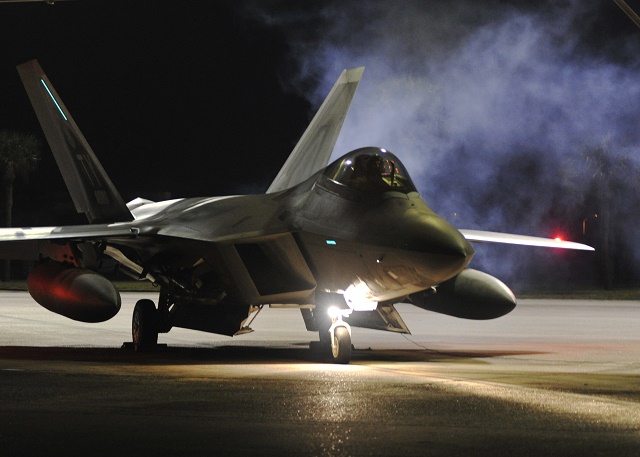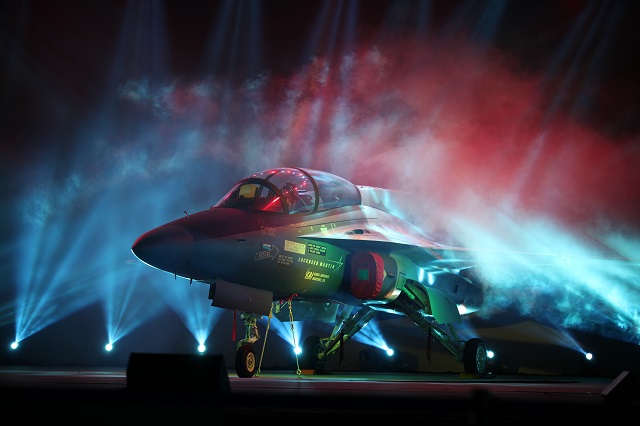The US Air Force has no interest in restarting production of the Lockheed Martin F-22, partly because it's too expensive and because it wants to move quickly on a next-generation fighter.
The service’s deputy chief of staff for strategic plans and requirements said as much during a congressional hearing on 8 March, suggesting that fighter jet manufacturers like Boeing, Northrop Grumman or Lockheed Martin may decide to offer modifications to existing technologies and platforms in the next F-X competition.
“Because we want to do it faster and don’t want to do another 20-year development programme for a whole host of reasons, we’ll try and go with technology that are at a high readiness level now with manufacturing capabilities that are at a high readiness level now,” Lt Gen James Holmes tells a Senate Armed Services subcommittee panel in response to questions about restarting F-22 production.
“I think it’s completely possible as we get the requirements that there may be competitors that bid on modification of an existing technology or platform like the F-22 and the F-35.”
Industry sources tell Flightglobal that there has been a lot of interest within the Pentagon recently about the restarting F-22 assembly. However, air force leaders have repeatedly denied seeking rough-order-of-magnitude cost estimates for procuring more F-22s and instead point to future fighter concepts as the best way forward.
The 187th and last twin-engine Raptor rolled off the assembly line in Marietta, Georgia in December 2011, but the manufacturing equipment was stored for possible use later. A RAND study in 2010 placed the cost of resuming F-22 production at $17 billion in 2008 dollars for 75 more aircraft, or $267 million per jet.

US Air Force
“There were some initial rough order of magnitude estimates of what it would cost,” USAF military deputy for acquisition Lt Gen Arnold Bunch tells the subcommittee. “[But] we have not estimated what it would be to re-open the line and populate it with more modern technology. We’ve not done that at this time.”
Holmes says pressing forward with the air force’s Next-Generation Air Dominance programme is the better way to make up for lower-than-planned fifth-generation fighter capacity, but cannot be a technologically exotic fighter jet that takes two or three decades to develop.
“They cost too much, they take too long, they make you drive for technology that’s so far into the future that it’s really hard to achieve and by the time you spend 30 years achieving it, it may not be exactly what you want,” he explains after the hearing. “We’re trying to move to a world where we go forward with new airplanes that take advantage of technology that’s ready to manufacture and we have the manufacturing skills to do it, and what could we produce in five years or 10 years instead of 30 years?
“It’s purely speculation on my part, but if I was going to ask a company to bid on what they could build for me in five years or 10 years, I’d expect that some of them would take advantage of work they’ve already done and base it on something they already have.”

Lockheed-KAI T-50-based T-X proposal
KAI
Similar thinking has led Lockheed to propose an upgraded version of the KAI T-50 for the air force's T-X trainer programme over a clean sheet design proposed by Skunk Works. Boeing and Northrop, though, do not have any in-service fifth-generation fighters upon which to base F-X proposals.
The US Navy is already moving forward with an analysis of alternatives (AOA) for its F/A-XX strike fighter platform that will eventually succeed the Boeing F/A-18 Super Hornet. The air force will begin that acquisition process next year, says Holmes.
The Air Force Research Laboratory is already working with industry on new aircraft and engine designs. Boeing, Northrop and Lockheed have already started releasing artist’s impressions of conceptual “sixth-generation” fighter jets, but none are based on previous aircraft.

Northrop Grumman
Source: FlightGlobal.com























